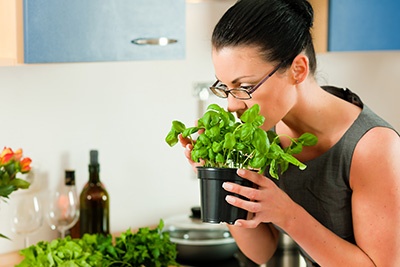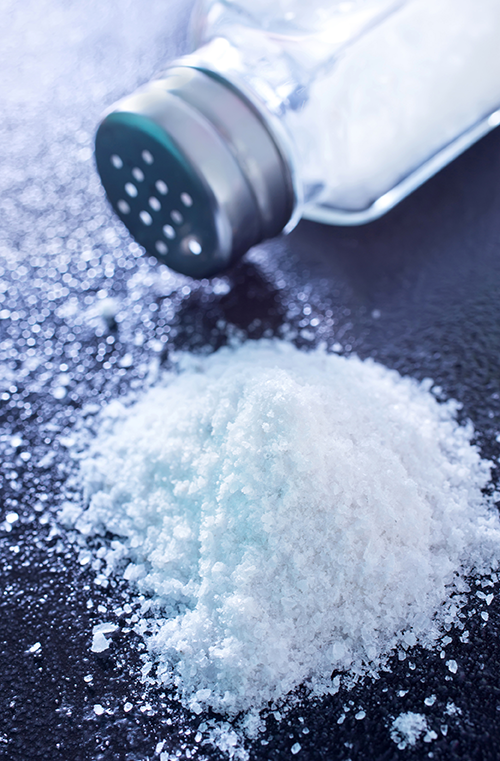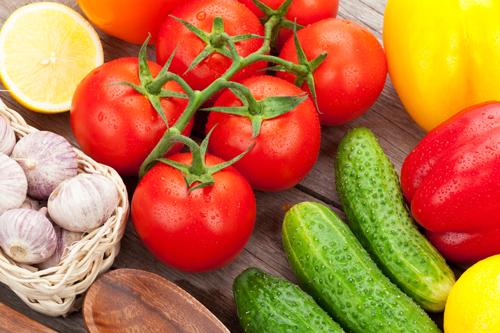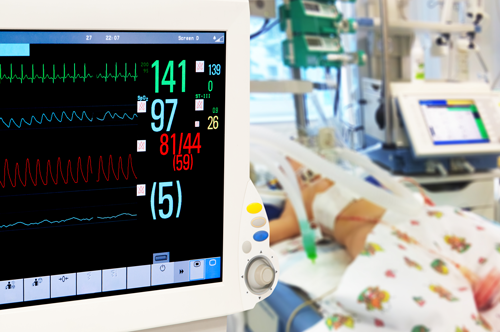Low sodium meals don’t have to be flavorless! Thinking outside the salt shaker can yield some results that are both healthy and delicious. Here are a few little flavor boosters that are perfect for any low sodium diet, and for those looking to reduce their sodium intake.
Low Sodium Cooking Tricks for Flavorful Food
Posted by Michael Thrash, CEC, CCA, PCII and Levinia Clark, RD, LDN on Jan 13, 2016 10:00:00 AM
Topics: Chronic Disease Management, Cardiac Diet, Heart Disease, Sodium
Q&A about Salt and Low Sodium Meals for the Elderly
Posted by Maureen Garner, MS, RD, LD on Jul 30, 2015 1:52:00 PM
Nine out of 10 Americans consume too much sodium. Too much sodium is a health concern for all ages, but particularly for older Americans. Kidney function declines with age, so seniors have a more difficult time removing excess sodium from their bodies. While the body needs an adequate amount of sodium to function, too much sodium can lead to stroke, heart failure, kidney disease, osteoporosis, and high blood pressure.
Topics: Nutrition, Home Delivered Meals, Senior Health, Cardiac Diet, Sodium
Cardiovascular disease is the leading cause of illness and death in the United States. The American Heart Association reports that a jaw-dropping 81.1 million American adults have at least one type of cardiovascular disease.
A diet high in saturated fat is a major risk factor for heart disease. Consuming a lot of saturated fat will elevate the body's cholesterol levels, cause cholesterol to accumulate in the arteries, and increases the chance of becoming obese due to the high caloric intake. While many people choose to follow a vegetarian diet due to cultural and religious beliefs, some choose a vegetarian diet to help restrict their intakes of saturated fats and cholesterol.
What are the advantages of a vegetarian diet?
Vegetarians have a reduced risk of cardiovascular disease, and have a lower body mass index and lower risk of obesity. Vegetarian diets have been associated with improved health outcomes. In fact, several clinical trials have documented that vegetarian eating patterns lower blood pressure. On average, vegetarians consume more fiber, potassium, and vitamin C than non-vegetarians do.
What does a balanced vegetarian diet look like?
A vegetarian does not eat any meat, fish, or poultry. A lacto-ovo vegetarian will include dairy prodcuts and eggs in his diet. Like all vegetarian's diets, the lacto-ovo diet includes an abundance of plant-based foods, including vegetables, fruits, beans, lentils, nuts, seeds, and whole grains, which provide an array of health-protective nutrients, such as fiber, vitamins, minerals, antioxidants, and phytonutrients.
A balanced lacto-ovo vegetarian diet should include six to eleven servings of whole grains, three to five servings of vegetables, two to four servings of fruit, three servings of dairy, and two to three servings of beans, nuts, and eggs. To make sure that you are meeting all of your nutrient needs, include a variety of foods from each group.
Topics: Chronic Disease Management, Vegetarian Meals, Cardiac Diet, Heart Disease
The Cold, Hard Truth About Heart Disease
Posted by Maureen Garner, MS, RD, LD on Jun 2, 2015 11:00:00 AM
According to the American Heart Association, or AHA, cardiovascular disease is the leading cause of illness and death in the United States. In fact, the AHA reports that an astounding 81.1 million American adults have at least one type of cardiovascular disease, which includes people with coronary heart disease, high blood pressure, heart failure, stroke, and congenital heart defects.
Topics: Chronic Disease Management, Cardiac Diet, Heart Disease









